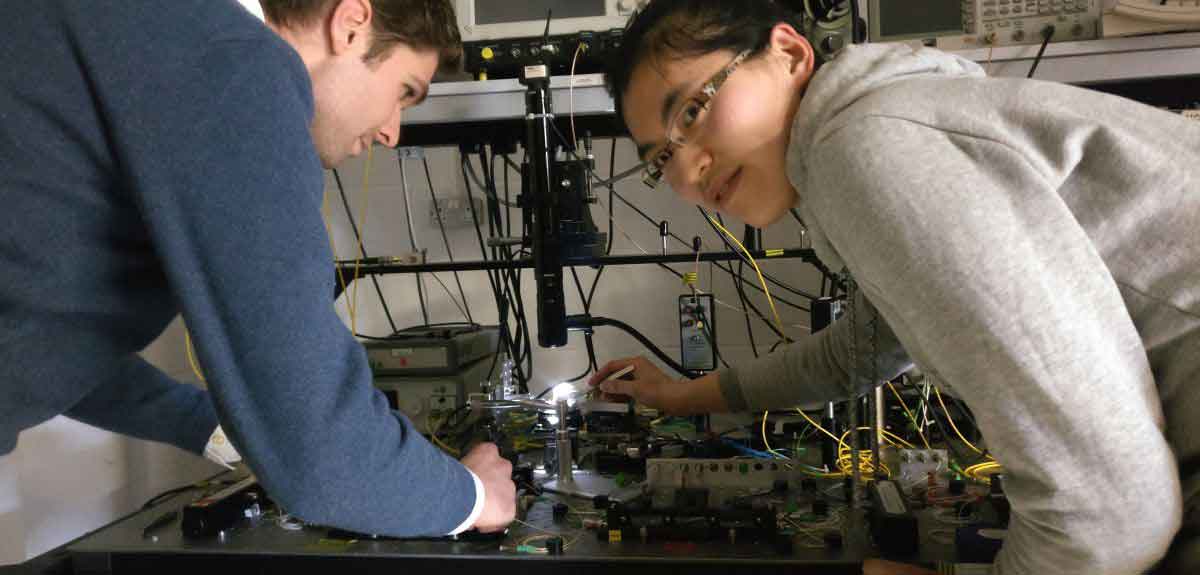Hyderabad researchers make magnetic graphene for digital devices
It is a carbon material, the thinnest
and strongest material known

Hyderabad: The growing popularity of
digital devices has spurred the need for integrated circuits that are light
weight, consume ultra-low power and are highly efficient.
Technology companies are increasingly
focusing on nano electronics for developing such devices but using nano
material such as graphene is still challenging as there is little evidence of
it showing intrinsic magnetism.
Now researchers from the Indian
Institute of Technology (IIT), Hyderabad and University of Hyderabad have shown
that graphene can be made magnetic with the control on electric field and
temperature. They have shown this in single layer zigzag graphene nanoribbons.
Graphene, a carbon material, is the
thinnest and strongest material known. It came into the limelight after its
exceptional quantum properties fetched Andre Geim and Konstantin Novoselov the
2010 Nobel Prize in Physics. From then on, there are many ongoing research
projects for its applications in nano electronics.
The team exploited intrinsic magnetism
in this light weight soft magnetic material, and also observed occurrence of
various magnetic phases and its transitions from one phase to another. It has
designed a methodology to identify the position of the appeared magnetic
phases, moving towards making ‘graphene chip’ a reality in future.
The research team includes this author
and the work was supervised by Dr Amit Acharyya and Dr Swati Ghosh Acharyya.
When your laptop or your mobile phone gets too heated up beyond the threshold,
you would sometimes get panicky that chips inside the phone would have burnt
out. That’s why some phone manufacturers nowadays claim that their phone
chipsets are based on 14nm finfet technology and that they have advanced
thermal management. Yet, we are facing the heating issues.

Just imagine a situation where the
heat generated via the chipset could be harnessed to perform computations.
Researchers proceeded with this interesting thought. What if the temperature
and electric field can be utilised to induce magnetism in graphene nanoribbons?
There are already reported instances in scientific literature that electric
field and temperature can be individually used for controlling or inducing
magnetism.
In order to make ‘graphene processors’
a reality, the key issue to be addressed is thermal management. To achieve
this, we need a mechanism which could harness excess heat generated in the
operation of gadgets to induce magnetism. Our group envisaged a processor
application using a single-layer zigzag graphene nanoribbon which could
potentially harness heat generated in the system, to reduce the voltage
requirement and to perform computations (information propagation) using spins.

The researchers performed
computational study on pristine free standing single layer zig-zag graphene
nanoribbons typically in the size of 1 to 50 nanometers to study magnetic
properties. They could induce intrinsic magnetism in nonmagnetic graphene by
application of electric field and temperature.
At a particular value of electric
field and temperature, paramagnetism was seen and further tuning to different
values led to achievement of ferromagnetism and antiferromagnetism. It was
observed that if one value (say electric field) is kept constant, the other
value (temperature) can be increased or decreased to obtain different magnetic
phases and vice versa. It means if one’s laptop is generating high temperature,
lower electric field could achieve the distinct magnetic phases in nano ribbons.
Not limiting themselves to electric
field and temperature, the researchers also built a bow-tie scheme to induce
magnetism in majority of the carbon allotropes. This thermoelectromagnetic
effect and unusual behaviour of magnetism in graphene which is tunable are definitely
a stepping stone towards graphene electronics.
The work could pave the way for
stretching performance of integrated circuits and eventually lead to realisation
of laptops powered by graphene-based microprocessors.
The research team included Santhosh
Sivasubramani, Sanghamitra Debroy, Amit Acharyya (IIT Hyderabad); Swati Ghosh
Acharyya (University of Hyderabad). The study results were published in journal
Nanotechnology.
The research work is partially funded
by Redpine Signals, Department of Science and Technology (DST), Centre for
Development of Advanced Computing (CDAC) and Ministry of Electronics and
Information Technology. -India Science Wire
Comments
Post a Comment